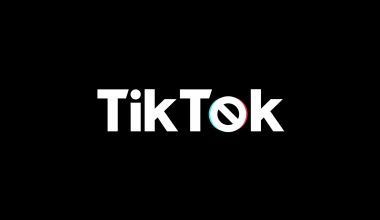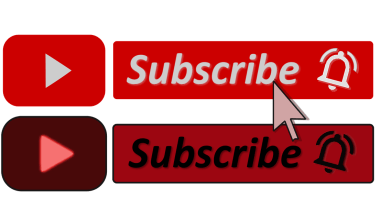If you’ve created a song you’re proud of, the next big step is getting it heard. Sharing your song on iTunes and other platforms is one of the best ways to make your music accessible to a global audience. With millions of users on these platforms, it’s the perfect opportunity to share your talent. But how exactly can you navigate this process without feeling overwhelmed? Don’t worry; we’ve got you covered.
When you share your song on iTunes, you’re opening the doors to a global music market. But why stop there? Sharing your music on multiple platforms ensures that no matter what app or service people prefer, your song is available. Platforms like Spotify, Amazon Music, and YouTube Music complement iTunes by offering different audiences and features. This multi-platform strategy ensures maximum reach and visibility for your music.
How to Prepare Your Song for Distribution
Before you start the process of sharing your music, preparation is key. Here are a few things to check:
- Finalize Your Track: Ensure your song is mixed and mastered professionally. Quality matters.
- Create Cover Art: Your song’s artwork is the first thing listeners see. Make it eye-catching and relevant.
- Choose a Distributor: Distribution services like TuneCore, CD Baby, or DistroKid help get your music on iTunes and multiple platforms easily.
- ISRC Code: This unique code identifies your song for royalty tracking. Most distributors provide it.
Step-by-Step Guide to Sharing Your Song
1. Select a Distributor
Music distributors act as the bridge between you and platforms like iTunes. Research options such as Deliver My Tune, CD Baby, and DistroKid to find one that suits your needs. Compare their pricing, services, and payout systems.
2. Upload Your Song
Once you’ve chosen a distributor, create an account and upload your song. Ensure you follow their guidelines regarding file formats, artwork, and metadata.
3. Add Metadata
Metadata includes your song title, artist name, release date, and genre. Accurate metadata ensures your song is searchable and discoverable on platforms like iTunes.
4. Select Platforms
Most distributors allow you to choose where your song will appear. Apart from iTunes, consider platforms like Spotify, Amazon Music, and YouTube Music to reach a wider audience.
5. Set a Release Date
Decide whether you want an immediate release or a scheduled one. A planned release gives you time to promote your song beforehand.
6. Confirm and Pay
Finalize your submission, pay the necessary fees, and wait for your song to be reviewed. Once approved, it will go live on iTunes and other platforms.
Promoting Your Song on Multiple Platforms
Sharing your song is just the beginning. To ensure it reaches as many listeners as possible, focus on effective promotion.
Platforms like Instagram, Facebook, and TikTok are excellent for connecting with your audience. Share snippets, behind-the-scenes videos, or live performances to generate interest.
Create a Website
Having a personal website gives you a central hub for your music. Include links to your iTunes page and other platforms so fans can easily find your songs.
Collaborate with Influencers
Reach out to influencers or content creators who align with your music style. Their audience can become your audience with the right partnership.
Use Email Marketing
Build an email list of fans and share updates about your song releases, concerts, or exclusive content.
Leverage Playlists
Getting your song added to popular playlists can significantly boost your streams. Reach out to curators or use distributor services that help with playlist placements.
Engaging Your Audience After the Release
Engaging with your audience is key to building a loyal fanbase. Here are some tips:
- Respond to Comments: Whether on social media or music platforms, interact with listeners who share their feedback.
- Host Live Sessions: Go live on platforms like Instagram or YouTube to discuss your song’s story and thank your fans.
- Create Merchandise: Selling merchandise related to your song can create an additional revenue stream and deepen fan loyalty.
- Analyze Performance: Use analytics from iTunes and other platforms to understand your audience and improve future releases.
Common Mistakes to Avoid
While sharing your song on iTunes and multiple platforms is exciting, it’s essential to avoid common pitfalls:
- Skipping Quality Checks: Poor audio quality or unappealing artwork can deter listeners.
- Ignoring Metadata: Incomplete or incorrect metadata can make your song hard to find.
- Not Promoting: Simply uploading your song isn’t enough. Promotion is crucial for visibility.
- Choosing the Wrong Distributor: Research thoroughly to find a distributor that aligns with your goals.
Why Consistency Matters
Sharing your song on iTunes and other platforms shouldn’t be a one-time effort. Regular releases keep your audience engaged and attract new listeners. Whether it’s a single, an EP, or an album, consistency is key to building your music career.
Final Thoughts
When you share your song on iTunes and multiple platforms, you’re not just releasing music; you’re building your brand and connecting with fans worldwide. By following the steps outlined here and avoiding common mistakes, you can ensure your music reaches its full potential. Remember, persistence and promotion are just as important as creating great music. So, take that leap, share your talent, and let the world hear your voice.
For further reading, explore these related articles:
- Monetize Your Track on Spotify and Earn Money
- How to Monetize Your Track on Spotify as an Independent Artist
- Monetize Your Track on Spotify Without a Label
For additional resources on music marketing and distribution, visit DMT RECORDS PRIVATE LIMITED.






